
Need a 16×7 garage door? There are many reasons why you may want to install a new garage door. Either way, your old door could be in terrible condition after serving you and your home for years. Or, you could be interested in enhancing the aesthetics of your home’s exterior. Whatever your reasons are, when planning to install a 16 x7 garage door, it is crucial that you know the costs. This helps you budget and plan on which features to or not to include.
16×7 Garage Door Cost
What is the cost of a 16×7 garage door you might be asking? The average cost of 16×7 garage door installation is $1,900–$2,600 for a standard non insulated door in the United States. These prices can, however, shoot up to $2,900- $4,500 for insulated 16×7 garage doors. For added windows you can add another several hundreds to a few thousands. How much you pay for having a new garage door installed depends on several factors such as the materials used, style, size and level of expertise of the installer amongst several other things that we will discuss later on in this article.
To find the exact cost in your area contact your local garage door expert today!
☎️ +18773591109
The cost of a 16×7 garage door will depend on the type and materials of your garage door, where you live, added windows, and other factor that will affect the total cost in case you need the door also installed so you don’t have to move a finger. Need garage door repair in Chicagoland instead? We provide garage door repair in the area of Chicago and near by suburbs in case we can repair your existing door.
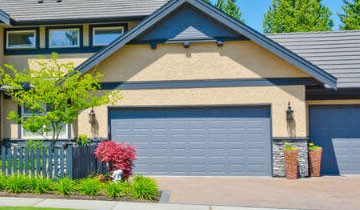

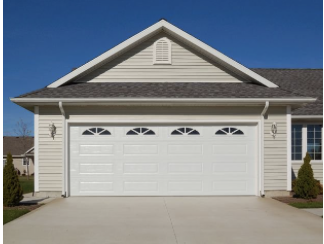

16×7 Garage Door Materials
Quality materials are definitely going to cost more than their cheap counterparts. However, isn’t it better to spend more on quality materials than buy cheap products that won’t last for more than a few months?
Garage doors are made from several materials which include wood, fiberglass, vinyl, steel, and glass and aluminum. These materials can be used separately or combined to create a more appealing door. From this list of materials, you can see that not all cost the same.
Various materials appeal to different conditions. Factors such as climate, location, and preferences heavily determine which material you should use for your garage door. To help you narrow down to the best material you should use, here is an analysis of the different types and their advantages as well as disadvantages.
16×7 Glass garage doors
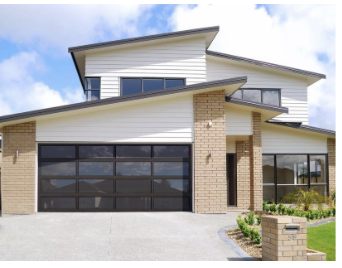

Nothing says luxury more than having a garage door made out of glass. This type of modern garage door comprises of both aluminum and glass panels. It gives your home a modern and aesthetically pleasing view. Before you dismiss glass doors because of how fragile this material is, please note that glass garage doors come with a 3-year warranty on hardware and a 5-year finish warranty.
They also feature low maintenance and durable aluminum frames, available in different colors such as bronze, white, black anodized, clear, and brown. You can also choose from acrylic and tempered full-view glass. And as if that’s not enough, glass garage doors can be insulated to increase energy efficiency.
Aluminum garage doors
Do you want a new garage door but you are on a strict budget? Aluminum garage doors are perfect for you. Other than being the most affordable material, aluminum requires minimal maintenance and it’s lightweight. Unlike other materials, Aluminum doesn’t expand or contract easily. That’s why it’s perfect for homes that experience severe winters. With this material, you can choose from various designs even ones that have painted wood.
Solid wood garage doors
This is the most popular type of material used in a 16X7 garage door. There are plenty of reasons why homeowners prefer wood to other materials. For one, wood is easily customizable. Meaning that you can design it to blend with your home’s design and décor. That aside, moisture is wood number one’s enemy and makes it not great for homes in wet and cold climates. Wood requires lots of maintenance and this can be expensive and time-consuming.
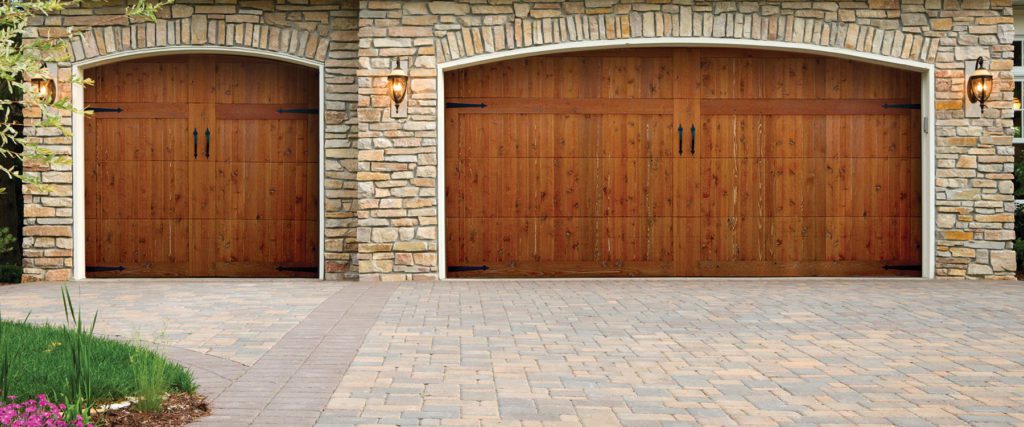

16×7 Steel garage doors
When making such a huge home improvement project, you must opt for a durable material that will last for years. Steel is an example of such a material. It is strong and can withstand the harshest conditions. It’s also affordable and low maintenance. You can also request to have your steel door that mimics the look of wood.
Fiberglass garage doors – If you live in an area that has milder climates and want a beautiful garage door installed on your property, go with fiberglass. It’s neat, lightweight, and ultra-quiet. It’s a top choice for many homeowners. The downside of fiberglass is that it gets brittle when exposed to low temperatures.
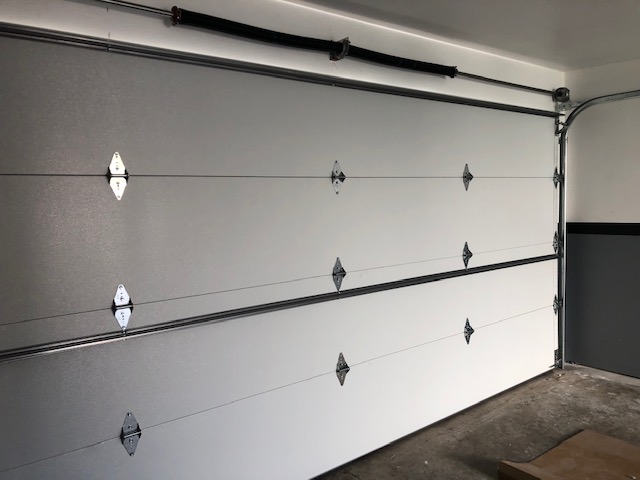

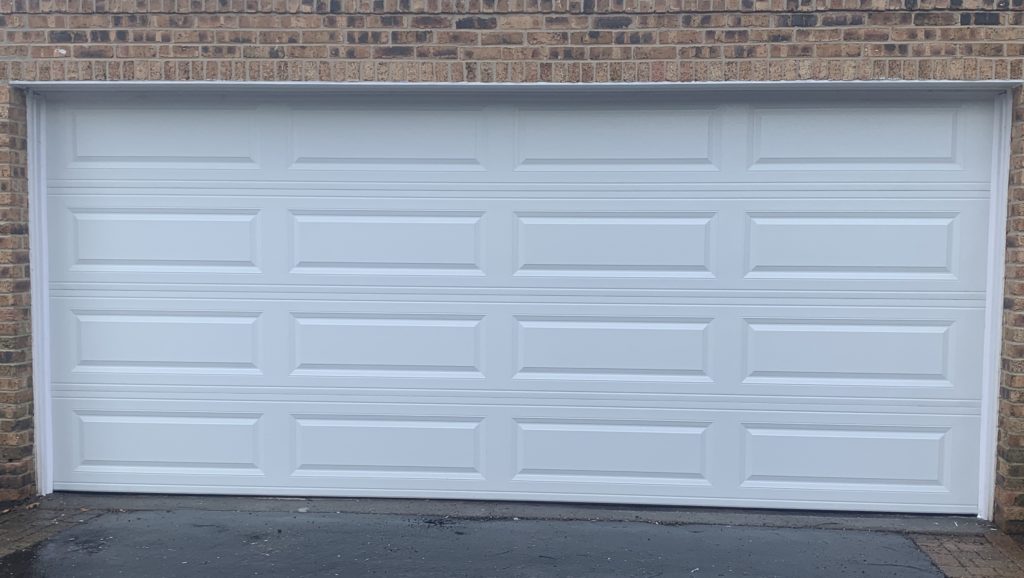

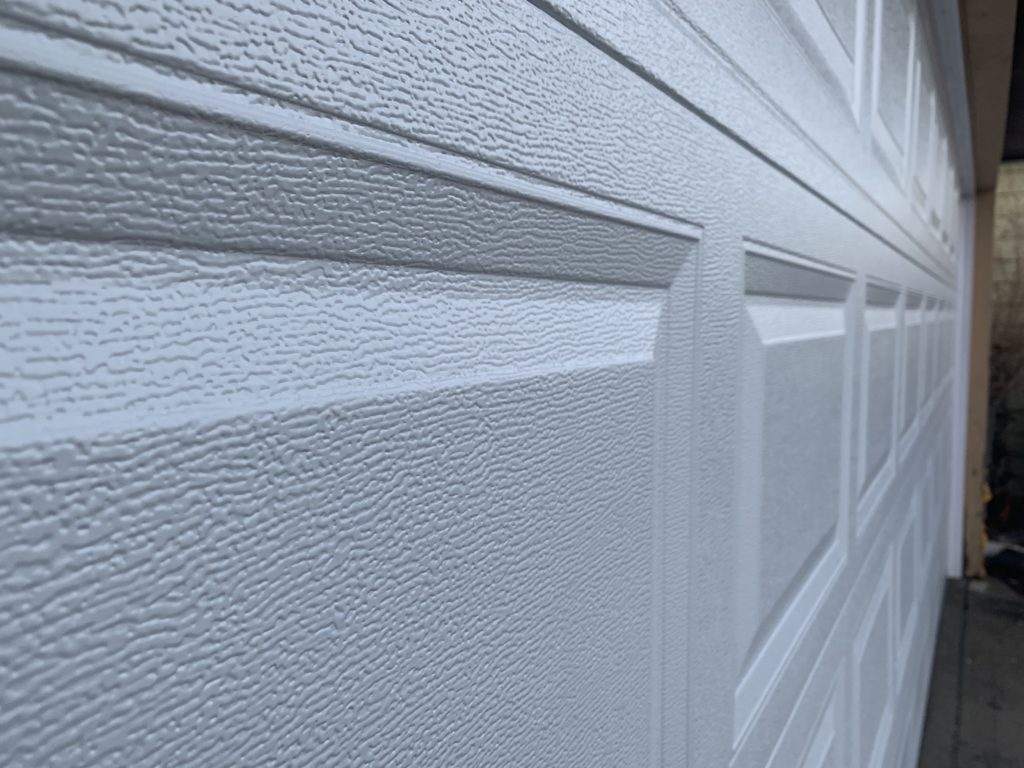

16×7 Garage Door Size and Dimensions



The cost of a standard-sized garage door minus the installation charges is about $1,200-$2K. The price doubles if it is a two-car garage. If you want a custom-made door with a different measurement other than the common ones which are 16×7 and 8×7, then the cost will increase.
How to Measure for your Garage Door Installation
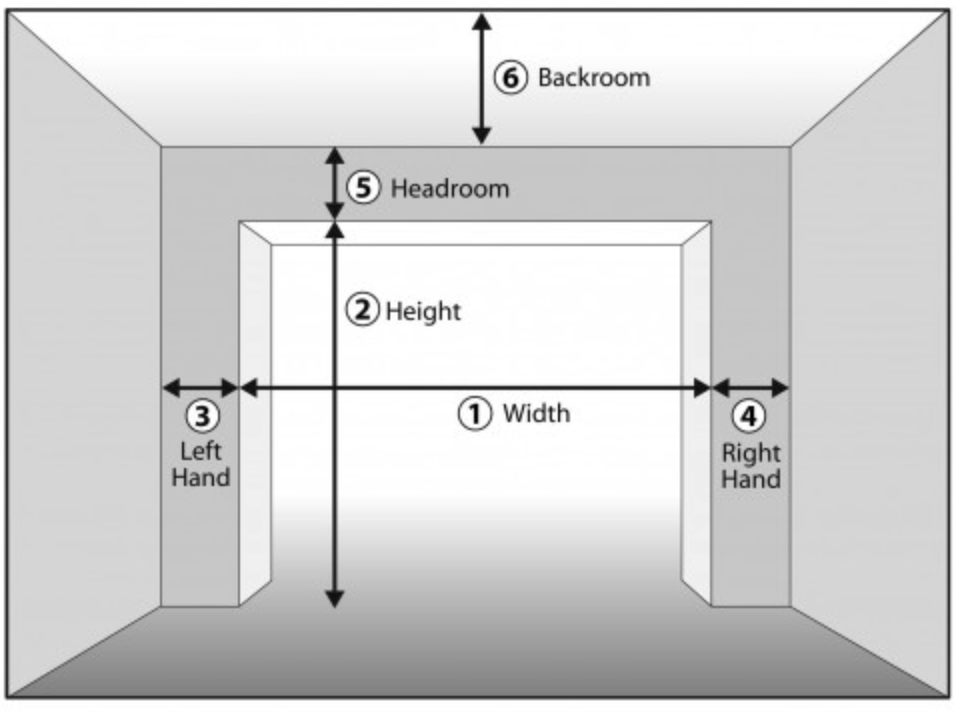

1. Measure for Your 16×7 Garage Door Opening
Measure the width of the entryway opening and the hight in feet and inches. This decides the size of entryway required. The unpleasant opening ought to be a similar size as the entryway.
2. Measure your Side Room
Measure for side room : 3-3/4″ is needed on each side for establishment of the upward track for standard expansion spring, standard twist spring and EZ-SET Torsion Spring System, 5-1/2″ for EZ-SET Extension Spring System.
3. 16×7 Garage Door Headroom
Measure region marked “headroom” – distance between the highest point of the entryway opening (“support header”) and the roof (or floor joist). 10″ is needed for the standard augmentation spring or EZ-SET Extension Spring System. 12″ is needed for standard twist spring and EZ-SET Torsion Spring System. On the off chance that you have limited headroom, exceptional equipment is accessible. Extra headroom is needed for establishment of a programmed garage opener.
NOTE: If entryway stature reaches out over the opening, the headroom estimation ought to be changed proportionately.
4. Measure Your Backroom Space
Measure region marked “backroom” – distance is estimated from the carport entryway opening toward the back part of the garage. The hight of the garage door plus 18″ is required. Extra back room might be needed for establishment of a programmed garage door opener.
Garage Door Styles
Every home has a certain style or design. Fortunately, there are many styles one can use when getting a new garage door. The common ones that you are familiar with include roll-ups and tilt-ups. For those with limited ceiling space, a roll-up door can fit perfectly in your home. There are other styles to choose from, they include slide-out garage doors, swing-outs, and many more. Before settling on a certain style, ensure that you understand its pros and cons. Also, ask your door installer for advice on which styles are ideal for your home.
In many homes, the garage door makes up one-third or more of the front facade, so its appearance is important. Poorly chosen, a garage door can be an eyesore. When garage doors are old or rickety, replacing them can affect the look of your property.
As with homes, garage door styles vary.
1. Raised Panel Steel Garage Door
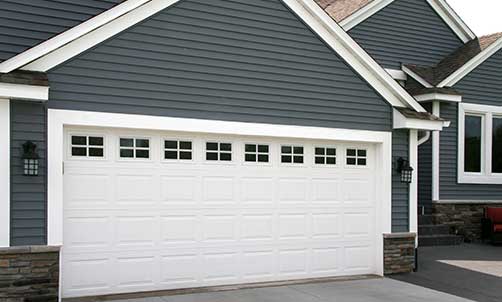

Raised-panel garage doors are popular. Raised-panel garage doors have become the conventional style. The original raised-panel doors had floating panels that fit inside a rail-and-style frame. In newer versions, such as the ubiquitous fiberglass kind, the door panels are generally solid and molded to mimic the traditional door.
You may purchase raised-panel garage doors in wood, fiberglass, aluminum, or steel, with a comprehensive number of options.
2. Traditional Doors
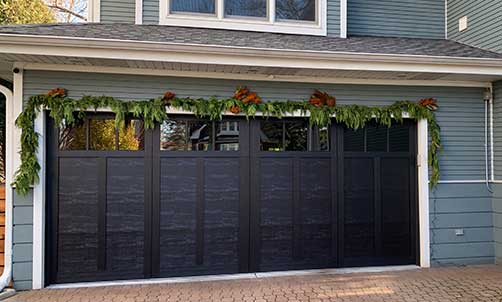

Leading manufacturers offer garage door styles to complement every American or European architectural style (Cape, Colonial, Victorian, Ranch, Craftsman) (French Country, Spanish, Mediterranean, Tudor). Almost all can be special-ordered in different materials and colors to match your home’s decor, whether it’s Tudor, Mediterranean, or Prairie. Doors with the now-standard roll-up system, in which horizontal, hinged panels roll up on overhead rails, will be the most available.
3. Carriage House Garage Doors
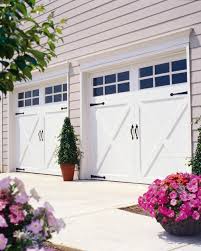

Carriage-style garage doors complement many home designs. They mimic traditional carriage house doors yet can look nice on modern residences. Traditional carriage doors opened manually from the center, whereas current variants folded open with motorized openers.
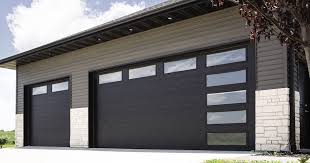

4. Contemporary Slab Doors


Modern garage door styles must match contemporary homes. Clean lines and high-tech materials should be reflected in a modern garage door. Clear, frosted, or colored tempered glass panels in aluminum frames are popular.
Slab doors, which fold up as one panel rather than three or four horizontal panels, are very common in retro-modern home designs. Slab doors require an automatic opener, like carriage doors.
16 x 7 Garage Door Colors
You may be considering a few carport entryway shading ideas that appeal to your personal preferences. However, don’t pick a shade since you like the vibe of it. To be sure your decision elegantly supplements your home and its environmental elements, you ought to think about different variables. How about we dig into all that you ought to think about when you’re considering what tone to choose for your carport entryway.
Your Home’s Three Colors
Each home ought to incorporate three tones: a field shading that fills in as the essential tone, a trim tone for regions like overhangs and door jambs and a highlight tone for entryways and screens. Do you need your carport entryway tone to coordinate with your field or trim tone? It will rely upon the position of the garage door in your home and what shading needs balance.
Pair light field tones with more obscure trim tones and the other way around. Go ahead and be innovative with highlight tones as a general rule, however an emphasize shading utilized on a carport entryway will ordinarily overpower the equilibrium.
Most commun colors
Some of the most common 16×7 garage door colors include the classic white, almond, and brown. in recent days though, 16×7 black garage doors have been getting attention to those homeowners who want something different.
The overall guideline is to either choose a color for your 16×7 garage door entryway a similar shading as the predominant shading or pick white. A garage door with a similar shade as your home will make the home look larger and will allow neighbors or guests to see different parts of your home. You don’t need your garage door to be the superstar, but rather an element of your home that adds to the general appearance.
Maybe you are thinking of repainting your whole home, and you don’t know where to start. Or on the other hand, maybe your home uses striking accent tones—how would you figure out what tone to choose for your carport entryway in the event that you don’t need tones to conflict?
Garage Door Insulation
16×7 Garage door Insulation
Garage door replacement is an easy home improvement. It’s a valuable renovation. Homeowners recoup 74% of the cost of a new garage door when they sell.
Insulated garage doors are trendy. Insulation reduces energy loss and has other benefits. These benefits cost more than a traditional uninsulated garage door.
Considering insulating your garage door?
This guide compares insulated and non-insulated garage doors to help you decide if insulation is right for you.
Discover the benefits of an insulated garage door.
- Insulated Garage Doors Save Energy
- Quieter insulated garage doors
- Insulation protects your car and belongings
- Warmer garages are more convenient
- Choose an Energy-Efficient Garage Door
- R-values for garage doors
- Insulated garage door
A garage door with insulation buffers outdoor and indoor temperatures.
Workers add fiberglass insulation to home walls to create an airtight seal. So, weather won’t affect your home’s interior. This reduces heating costs and keeps you comfortable. Insulation can help your garage.
Uninsulated garage doors consist of a single metal or wood panel and offer few benefits beyond security. Insulated garage doors have two panels or a hollow door frame filled with insulation, like Clopay’s Intellicore Insulation Technology. Best-in-class insulation for garage doors.
Automatic garage doors use the same insulation. When you buy an insulated custom garage door from a local garage door dealer, you’ll get many benefits over a single-panel, uninsulated door.
Garage Door Opener For 16×7
A garage door opener provides easy, lit access to your home and improves security. These devices are more convenient with smart-device compatibility and home-automation system connectivity.
Summary
Opener types
Horsepower
Garage Door Openers
Protection
Opener types
Garage door openers are generally similar. A motor powers a railcar or trolley. As the trolley moves, it opens or closes the garage door. The motor’s trolley movement differentiates garage door opener models.
Garage Door Opener Brands
Genie
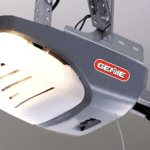

Since the late 1950s, Genie has been a trusted garage door opener brand. Alliance Manufacturing Company began in 1923 and created Genie in 1954.
Genie was founded in 1958 and created the first direct-drive screw opener.
These openers use Overhead Door’s Safe-T-Beam® self-diagnostic system. This safety system uses an invisible infrared beam to reverse the door if something passes through it.
GenieSenseTM monitors and diagnoses door issues. This system stops the door if it changes, adding safety. Genie openers lift in 9-12 seconds on average.
The Intellicode® system prevents unauthorized garage door access and signal piracy. Compatible with HomeLink® and Car2U®.
The company also sells side-mount openers for garages with low headroom and space restrictions, keypads, and remotes.
Motion-detecting lights, frequency scanning to ensure the door opens even with interference, wi-fi monitoring and operation, and ultra-quiet performance are standard on most Genie openers.
Aladdin Connect® monitors and reports on garage door movement using your router. This feature doesn’t require a smart-home system.
Genie’s product selector helps people choose the right garage door for them, whether professionally installed or DIY.
Chamberlain Garage Door Opener


Chamberlain, LiftMaster, and Craftsman are Chamberlain Group brands. The Group owns Merlin garage door openers and Grifco commercial openers.
Chamberlain sells 24 garage door openers. They make belt and chain drive openers, wall-mount models, and myQ®-compatible openers.
RJ070 is their most expensive and feature-packed opener. RJ070 is a quiet, vibration-free wall-mount design. Built-in wi-fi, myQ® app, automatic locking, battery backup, safety sensors, and ultra-bright LED light.
This Chamberlain model is Amazon Key-compatible. Amazon Key users can get in-garage delivery by allowing workers to hide packages. It’s also HomeLink® compatible.
Other Chamberlain openers have battery backup, LED lighting, and wireless keypads. Product lines:
Wi-Fi® Ultra-Quiet
SafeViewTM Camera
C2C LightingTM
Chain Drivemax
Chamberlain sells every type of garage door opener, with options for most models.
LiftMaster Opener for 16×7 garage doors
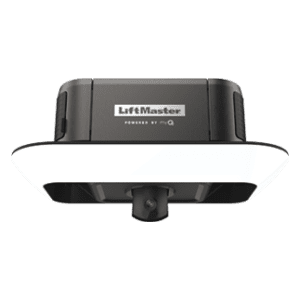

Liftmaster, another Chamberlain Group brand, sells 20 openers with varying features and benefits.
The Secure ViewTM Ultra-Quiet Belt Drive Smart Opener has a camera and LED lighting. LED light ring brightens dark garages. Same opener with non-ring LED lights is available.
Most Liftmaster openers work with the Chamberlain Group’s myQ® app, allowing smartphone monitoring and control. The garage door openers with cameras provide full video and two-way audio to your phone.
This company offers a wall-mount opener, chain or belt drive in most models, and horsepower-ranging openers so you can choose one powerful enough without overspending.
Liftmaster’s garage door openers have battery backup, smooth start-and-stop, safety sensors, HomeLink® compatibility, and Amazon Key compatibility.
Chain-drive garage door openers
Chain-drive garage door openers use a metal chain to raise and lower the door. Chain-drive systems are inexpensive but create more noise and vibration. Having a detached garage may reduce noise. If the garage is under a bedroom or living space, consider a quieter option.
Belt-drive garage door openers
Belt-drive garage door openers work like chain-drive systems but use a belt to move the trolley. This belt’s quieter, smoother operation is ideal for homes with living or sleeping spaces above or next to the garage. Belt-drive systems have fewer moving parts, reducing maintenance.
Direct-drive Openers
Direct-drive openers are quiet. The motor acts as a trolley to raise or lower the door along the track. This single moving part reduces noise, vibration, and maintenance needs.
Garage door opener motors use AC or DC (DC). DC-powered openers convert AC to DC power, while AC-powered openers don’t. Smaller, quieter, and softer starts and stops are DC motor benefits. Some DC-motor openers have battery backup for when the power goes out.
Horsepower
Compare garage door openers’ lifting power using HP ratings. Residential models have 1/2 to 1-1/2 horsepower. A 1/2-horsepower motor should be sufficient for a double-car sectional garage door, but a higher-power model will operate with less effort and wear and tear. Heavier or one-piece doors may need more power.
DC garage door openers may use HPS or HPC ratings to compare power.
Standard garage door opener components include:
- Garage door opener remotes, wall-mounted buttons, or keypads.
- Rail segments fit 7-foot-tall garage doors with bar and chain/ belt
- Safety Sensors
A manual release lets you manually raise or lower the garage door from inside.
Security light turns off after a set time.
Some Opener Models Can Include:
- Keychain remotes are pocket-sized.
- Home-automation-system connectivity allows remote opener control.
- Built-in Wi-Fi lets you operate the door from a mobile app without an automation system.
- Built-in or optional smart-device compatibility lets you control and monitor the opener from a smartphone.
- Some vehicles’ controls can operate the opener.
- After a preprogrammed time, auto-close lowers a garage door.
- Locks can block garage door remotes.
- Soft-start/stop motors reduce wear and noise.
- In a power outage, the opener’s battery kicks in.
- Includes rail extensions for 8-foot-high doors.
- Automatic motion-sensor lights turn on.
- Notes:
- – Many remotes, wall-mounted buttons, and keypads control multiple openers. This works for garages with multiple doors.
- – Make sure the garage door opener and features are compatible with your door and ceiling.
Safety and Security
If your garage door opener was made before 1/1/93, consider upgrading for safety. Modern openers generate electronic beams to prevent entrapment. When a person, animal, or object breaks the beam, the door reverses direction. When a closing door hits an obstacle, garage door openers reverse it. Test the opener’s safety features per the manufacturer’s instructions.
New garage door openers increase security. Remotes transmit an opener code. Rolling-code technology prevents code theft and ensures a neighbor’s remote won’t open your garage. Each remote door opening generates a random code. The new code will work when you use the remote again.
Cost of a Garage Door Opener for a 16×7 Door?
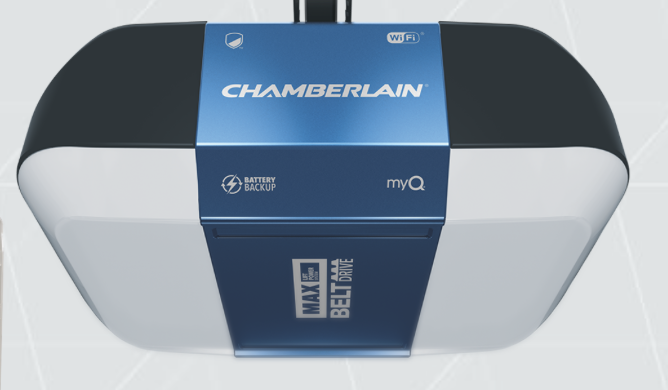

If you are replacing a garage door, there may be no need for an opener. But if it’s a new installation, you will need one and the cost is about $450 for the opener and it includes installation. Garage door openers are mandatory. It entails the mechanism, electric motor, and track the garage door follows when it closes or opens. Advanced garage door openers feature smartphone or keypad user controls. You can check the best Chamberlain B1381 here.
There are three main types of garage door openers to choose from;
- Screw Drive – it doesn’t require a lot of maintenance but it’s a bit noisy.
- Belt drive – Ideal for attached garages, these types of openers use a more advanced chain and are very quiet.
- Chain Drive – They are noisier than all the above but are quite pocket-friendly. This is the most common type you will find in many homes.
Compare Chamberlain vs Liftmaster on this page to see which one works best for you.
The Duration It Takes to Install a 16 x 7 Garage Door
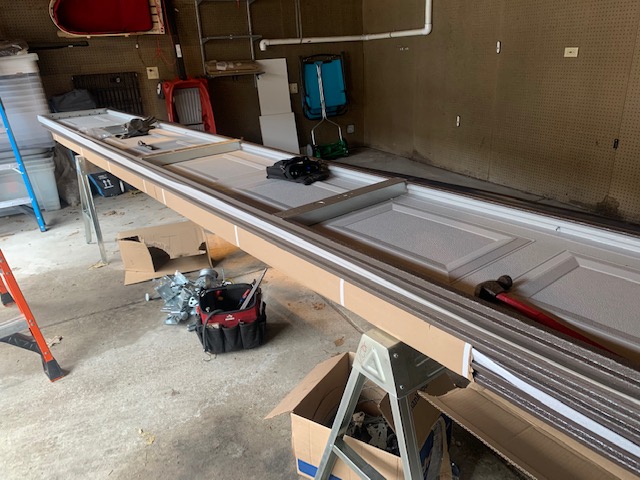

Depending on the garage door sizes and materials used, the installation can take up to four hours. If you hire an installer with assistants, the project can even take as little as two hours. Complex and custom garage doors can take up to a day. The installation team will always give you a heads-up on how long the process will take.
A Breakdown of Garage Door Installation Cost
Earlier, we mentioned that the average fee for garage door installation is about $850. We then mentioned that a standard garage door costs $1,200 and the opener is $350-$600.(you can find lower cost openers as well) Where does the rest of the money go to?
Because the installation of garage doors is a complex process, you will need to hire a team to help you out. This team will charge an installation fee and include prices for a new door and opener. Installation fees usually cost $250 for a single size door and $350 or more for a double size door. There are also other factors that affect the overall garage door installation costs, and these include the level of experience of the installation crew and materials used. Garage door companies have to cover skill labor, tools and materials, plus travel expenses.
Why Hire a Technician to Install My Garage Door?


Thanks to the internet, any project can easily be turned into a DIY. In this case, however, you should evaluate your options carefully. Of course, installing a garage door by yourself saves you hundreds of dollars. But, how good are you in garage door installation?
There are many advantages of hiring a home improvement technician to install your garage door. The first thing they will do is to dismantle your old garage and dispose of it. Can your car fit into a garage door? And even if it does, where would you take your old garage door? When working with professionals, you don’t have to worry about that.
A skilled garage door installer will have the tools and knowledge of how to install a garage door correctly. These doors can be quite complicated, especially if you aren’t familiar with the mechanisms of how they work. Hiring an expert goes a long way towards ensuring your garage door is installed and functions correctly. Hiring a company like ours ensures you get useful input, advice, and recommendations on matters related to materials and style.
Saving on your Garage Door Installation?
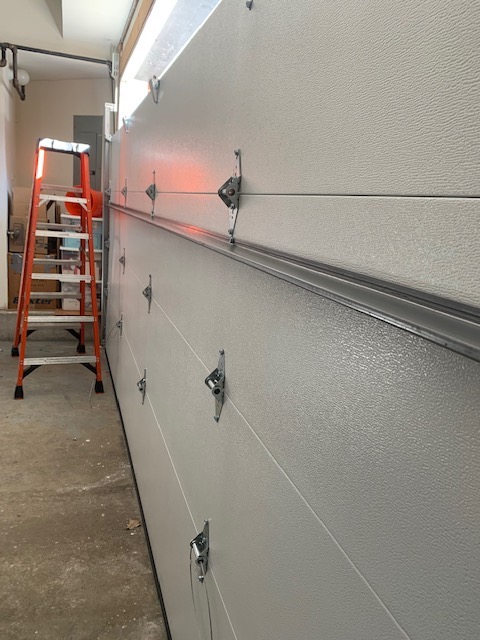

Yes, there are! Before buying a garage door or hiring an installation team, you need to check if they offer warranties. When the labor and door are under warranty, you can be assured that you will get compensation if the door gets damaged or stops working because of mechanical or environmental effects.
And that’s not the only way you can save on garage door installation. The ideal home improvement company you should work with is one that is keen on customer satisfaction. For instance, we charge $350 for a standard garage door installation, which is inclusive of emergency repair services and other after sales services. You can also save by repairing. contact someone local to do it for you. You can a garage door repair in Chicago with Victor.
Please be advised against fees that are too good to be true. In your quest to find an affordable garage door installer, if the prices seem too low, exercise caution as such people are either newbies or don’t have professional tools for such a task.
A Guide to Hiring a 16X7 Garage Door Installer
Though it’s not hard to find a garage door installer, it’s not every technician who is skilled, knowledgeable, experienced, and friendly. These four traits are crucial in ensuring your new garage door functions correctly and safely. To help you find the right garage door installer. here is a guide on how to look for one.
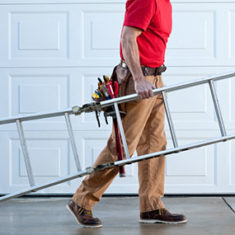

- The first step is going online and searching for the best garage door installers near you. Google will give you a long list. Look through the list, while looking at each installer’s website. Always pay keen attention to ratings and reviews.
- If you find a couple of potential garage door installers, ask about their prices. Inquire for a price breakdown. This will give you an overview of what you are going to pay for.
- Ask for credentials. If indeed they are a reputable company, they should be approved to offer these services in your city.
- Ensure that you put it all on paper and don’t sign without reading the entire document. In that agreement, the installer should list the price, materials used, and when they expect to finish the project.
- Finally, choose the installer that stands out from the rest. By now, you should have at least four price estimates from reputable installers. Compare the prices and hire the one you are most drawn to. It is very important that you compare prices as this ensures you don’t get overcharged.
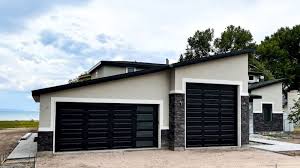

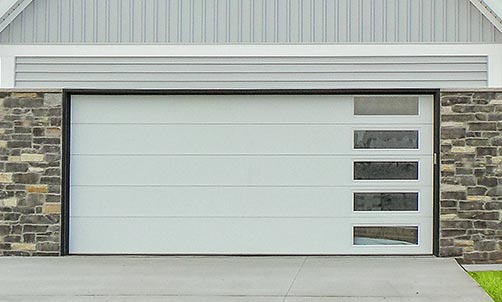

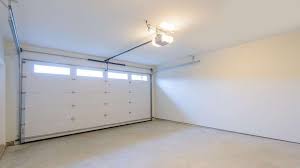



Leave A Comment